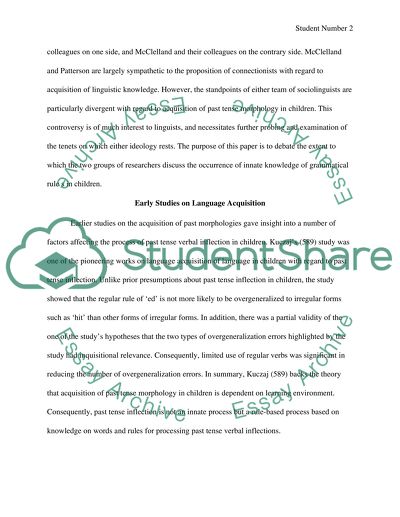Cite this document
(“To what extent does research on past tense morphology suggest that Paper”, n.d.)
Retrieved from https://studentshare.org/education/1395929-to-what-extent-does-research-on-past-tense-morphology-suggest-that-children-are-born-with-innate-knowledge-of-grammatical-rules
Retrieved from https://studentshare.org/education/1395929-to-what-extent-does-research-on-past-tense-morphology-suggest-that-children-are-born-with-innate-knowledge-of-grammatical-rules
(To What Extent Does Research on past Tense Morphology Suggest That Paper)
https://studentshare.org/education/1395929-to-what-extent-does-research-on-past-tense-morphology-suggest-that-children-are-born-with-innate-knowledge-of-grammatical-rules.
https://studentshare.org/education/1395929-to-what-extent-does-research-on-past-tense-morphology-suggest-that-children-are-born-with-innate-knowledge-of-grammatical-rules.
“To What Extent Does Research on past Tense Morphology Suggest That Paper”, n.d. https://studentshare.org/education/1395929-to-what-extent-does-research-on-past-tense-morphology-suggest-that-children-are-born-with-innate-knowledge-of-grammatical-rules.


